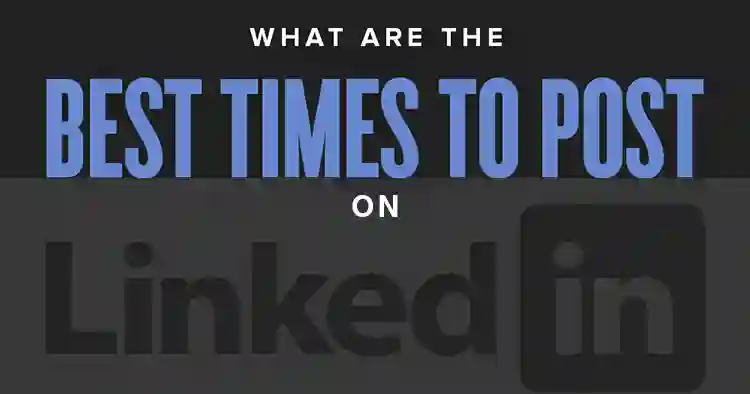LinkedIn has evolved into a dynamic platform where professionals showcase their skills, network with peers, and explore career opportunities. While content quality and engagement are crucial components of a successful LinkedIn strategy, precision timing often remains the missing link. This article explores the significance of precision timing in your LinkedIn strategy and how mastering this element can elevate your online presence.
The Dynamics of LinkedIn Engagement
LinkedIn, unlike other social platforms, caters specifically to professionals, making it essential to understand the unique dynamics of engagement. Users visit LinkedIn with a professional mindset, seeking valuable content, industry insights, and meaningful connections. To effectively capture their attention, your content must align with their activity patterns and engagement habits.
The Importance of Precision Timing
Precision timing refers to strategically scheduling your LinkedIn posts to coincide with the moments when your target audience is most active and receptive. It involves identifying optimal posting times based on data-driven insights, industry trends, and the specific behaviors of your audience. Precision timing addresses the nuances of LinkedIn engagement, ensuring your content appears when professionals are most likely to see, interact, and derive value from it.
Optimal Posting Times for Precision Timing
- Early Morning Engagement (7:30 AM – 9:00 AM): Start your day with precision by posting during early morning hours. Professionals often check LinkedIn as they begin their workday, making this period ideal for capturing attention and fostering engagement.
- Midday Insight (12:00 PM – 1:30 PM): Utilize the lunchtime window to share valuable insights. Many professionals use this break to catch up on industry news and updates, presenting an opportune moment for your content to make an impact.
- Afternoon Productivity (3:00 PM – 4:30 PM): Combat the post-lunch lull by posting during the mid-afternoon hours. Professionals seeking a productivity boost may engage more actively during this time, making it favorable for visibility and interaction.
- Evening Reflection (6:30 PM – 8:00 PM): Engage with professionals during their evening reflection period. Posting in the early evening allows your content to be part of the conversation as users wind down, potentially leading to more thoughtful interactions.
- Strategic Weekends (Saturday 10:00 AM – 11:30 AM): Challenge the notion that weekends are less active on LinkedIn. Post strategically on Saturday mornings when there’s potentially less competition for attention, increasing the visibility and impact of your content.
Factors Influencing Precision Timing
- Audience Analysis: Conduct a thorough analysis of your target audience. Use LinkedIn analytics to understand when your connections are most active. Consider factors such as time zones, industry, and job roles to tailor your posting times accordingly.
- Industry-Specific Behavior: Different industries may exhibit distinct engagement patterns. Research and adapt your timing strategy to align with the behaviors of professionals in your specific field. Industry events, conferences, and trends can also influence the optimal timing for your content.
- Global Reach: If your LinkedIn network spans across various time zones, factor in global reach. Identify peak engagement times in different regions to ensure your content resonates internationally, reaching professionals regardless of their geographic location.
- Experimentation and Iteration: Precision timing is an ongoing process that requires experimentation and iteration. Test different posting times and closely monitor the performance of your content. Use data-driven insights to refine your strategy over time.
Strategies for Implementing Precision Timing
- Consistency with Flexibility: Establish a consistent posting schedule based on your precision timing strategy. However, remain flexible to adjust your posting times as needed. Industry events, changes in audience behavior, and algorithm updates may warrant adjustments to maintain optimal engagement.
- Leverage LinkedIn Analytics: Dive into the rich analytics provided by LinkedIn. Track metrics such as impressions, clicks, and engagement rates. This data-driven approach empowers you to understand the performance of your posts and make informed decisions about timing adjustments.
- Active Engagement: Timing goes beyond posting; it extends to your active engagement with the platform. Respond promptly to comments on your posts, participate in relevant discussions, and consistently contribute valuable content to your network.
- Diversify Content Types: Accompany your precision timing strategy with a diverse range of content types. Experiment with text updates, images, videos, and articles to cater to different preferences within your audience, maximizing the impact of your posts.
- Strategic Use of Hashtags: Incorporate relevant hashtags into your posts to enhance discoverability. Research and use hashtags aligned with your content and industry to broaden the reach of your posts beyond your immediate network.
Conclusion
Precision timing is the missing link that can bridge the gap between a basic LinkedIn strategy and a highly effective one. By mastering the art of posting at the right times, you can significantly enhance your visibility, engagement, and overall impact on the platform. Remember, precision timing is a dynamic element that requires continuous refinement based on audience behavior, industry trends, and platform dynamics. As you incorporate precision timing into your LinkedIn strategy, you’re not just posting content; you’re strategically positioning yourself for success in the professional networking arena.








